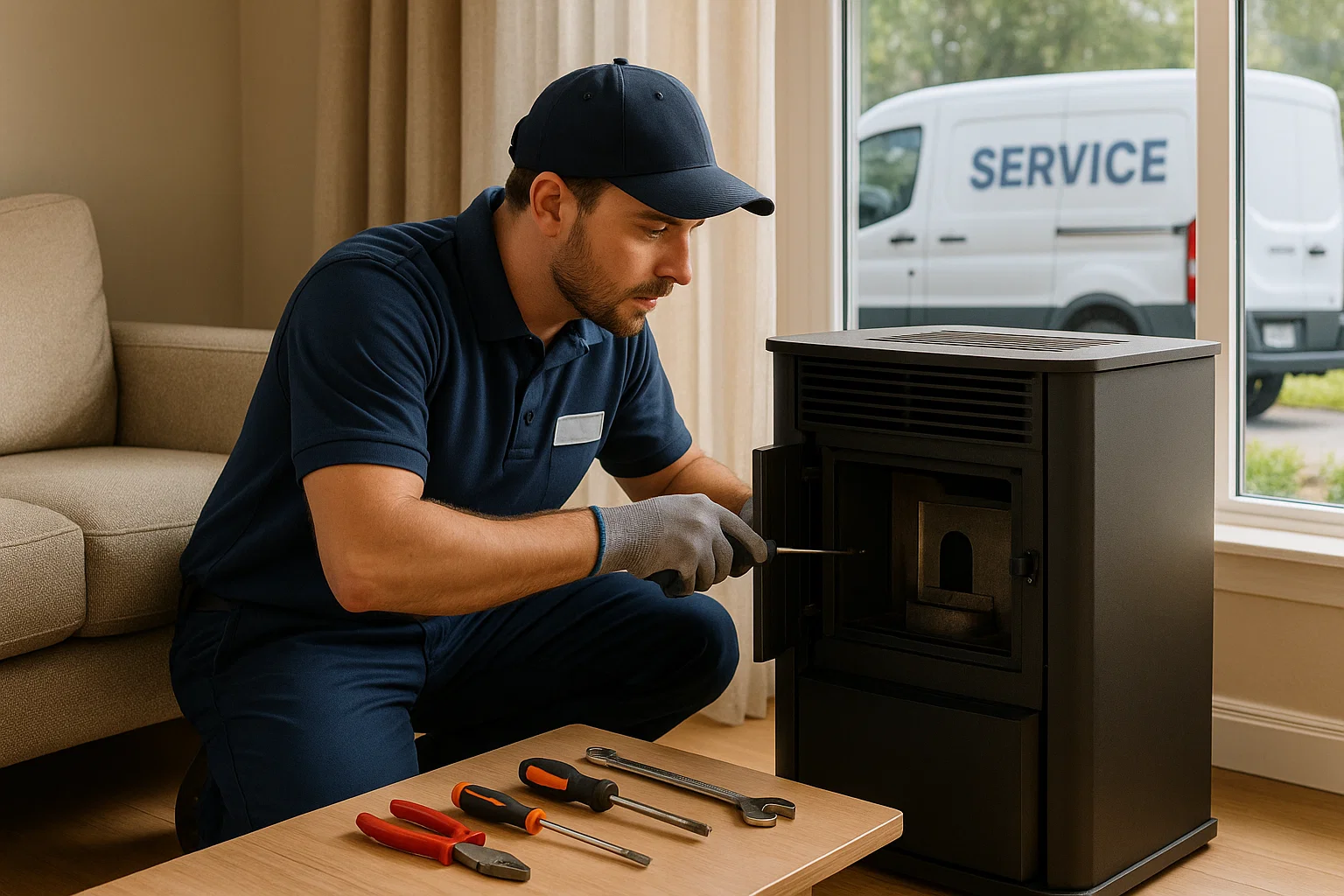There’s nothing quite like the steady warmth of a Colorado Springs pellet stove on a chilly night. These stoves tend to be reliable companions through many winters, but like any hardworking appliance, they can run into issues. If you’re wondering whether your pellet stove is trying to tell you something, there are a few telltale signs you can keep an eye (and ear) out for. Spotting these early can save you from bigger headaches down the road and help you avoid sudden cold snaps at home. So, let’s break down the most common indicators that your Colorado Springs pellet stove might need a little TLC or Pellet Stove Repair.
“A warm home starts with a healthy stove—listen to the little signs before they turn into big problems.”
Unusual Noises and Odd Smells: Your Stove is Speaking Up
If your pellet stove starts acting like a percussion band, it’s time to take notice. Any new rattling, grinding, or thumping sounds aren’t just background noise—they’re hints that something inside isn’t right. Sometimes, it’s a loose part or a feed motor struggling to work. Other times, it could be a blower fan on its last legs. Don’t ignore squealing or screeching, either; these could mean bearings are going bad.
Smells are another clue. A faint woodsy scent is normal, but if you suddenly notice strong, burnt, or even plastic-like odors, don’t brush it off. These smells might signal a blockage, electrical issue, or overheating. Breathing in strange fumes is never a good idea, so if your nose wrinkles every time you walk by your stove, it’s time for a checkup.
Poor Heat Output and Unsteady Flames: When Cozy Turns Chilly
Maybe you’ve noticed your living room isn’t as warm as it used to be, even though the pellet stove has been running for hours. Low heat or a flame that flickers, sputters, or dies out quickly points to a problem. Sometimes, the pellets aren’t feeding correctly into the burn pot. Other times, ash buildup or a dirty combustion chamber could be choking your flame.
Watch the flame itself: a healthy fire should be lively and bright, not weak or smoky. If you’re constantly cranking up the settings but the room still feels cold, don’t just pile on extra pellets—look for deeper issues. A clogged vent, dirty sensors, or malfunctioning fans could all be to blame.
Frequent Shut-Offs and Error Codes: The Stove That Won’t Stay On
There’s nothing more frustrating than a stove that starts up, warms for a bit, then just gives up and shuts off. Modern pellet stoves often come with error codes or blinking lights to help you pinpoint what’s wrong. Frequent automatic shut-offs usually mean your stove is protecting itself from damage—maybe there’s a blocked vent, a jammed auger, or a sensor that’s not happy.
If you’re seeing error messages or having to restart your stove multiple times a day, don’t ignore it. These are your stove’s way of waving a red flag and asking for help. Even if you can reset it for now, repeated shut-offs can lead to bigger, more expensive repairs if left unchecked.
Key Features of Colorado Springs Pellet Stoves
Automatic Ignition:
No more matches—just press a button and let the stove handle the rest.
Programmable Thermostat:
Lets you set the perfect temperature and keeps it steady all day.
Large Hopper Capacity:
Fewer trips to refill pellets means more time to relax.
Efficient Heat Distribution:
Built-in fans move warmth evenly around your space.
Easy Access Panels:
Designed so you can clean and inspect key parts without a hassle.
Cost Table: Repair vs. Replacement
| Repair Type | Estimated Cost | When to Consider |
|---|---|---|
| Basic Cleaning & Maintenance | $80 – $150 | Yearly, or if performance drops |
| Igniter Replacement | $120 – $250 | If stove won’t start up |
| Blower/Fan Repair | $180 – $350 | If air movement is weak or noisy |
| Auger Motor Repair | $140 – $300 | If pellets don’t feed properly |
| Full Stove Replacement | $2,000 – $4,500 | For very old or unsafe stoves |
Safety First: Tips for Using Your Pellet Stove
Never block the stove’s air intake or exhaust vent.
Keep flammable items at least three feet away from the stove.
Test your smoke and carbon monoxide detectors every month.
Clean out ash regularly—don’t let it build up in the burn pot.
If you ever smell gas or see smoke where it shouldn’t be, turn off the stove and call a professional.
FAQs: Pellet Stove Repair and Care
Q: How often should I have my Colorado Springs pellet stove serviced?
A: A full professional checkup once a year is smart, but you should clean out the ash and inspect the stove every few weeks during heavy use.
Q: Can I repair my pellet stove myself?
A: Some things, like cleaning or replacing simple components, you can handle with a manual. But for electrical, motor, or vent issues, it’s safer to call a pro.
Q: Why does my stove keep shutting off?
A: This could mean there’s a blockage, sensor issue, or a problem with the pellet feed. If a quick clean doesn’t help, get an expert to take a look.
Q: Is it normal for my stove to smell when first turning on?
A: A faint smell is common, but strong or lingering odors are not—these should always be checked out.
Conclusion: Listen to What Your Stove Is Telling You
Your Colorado Springs pellet stove does a lot of heavy lifting to keep your home warm and comfortable. By paying attention to odd noises, strange smells, shaky heat output, and error codes, you can catch small problems before they turn into major repairs. A little attention now can mean a lot more coziness (and fewer headaches) all winter long. If you’re ever in doubt, don’t hesitate to reach out for Pellet Stove Repair—it’s better to be safe and warm than sorry and cold!
Read More: Colorado Springs Chimney Sweep


